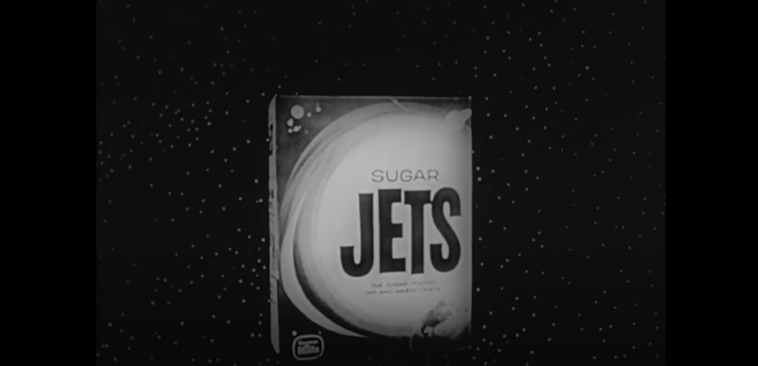Breakfast cereals have been a morning staple in American households for generations, offering a quick, crunchy, slurpy, and tasty start to the day. While some brands have endured for decades, others have vanished from store shelves, leaving behind a legacy of colorful boxes, quirky mascots, and sugar-coated nostalgia.
These forgotten favorites once graced kitchen tables across the country and were a delight for children and adults alike with their unique flavors, shapes, and marketing campaigns. From space-age innovations to animal-shaped crunchy bits, these cereals tell a story of changing tastes, evolving nutritional standards, and the ever-shifting landscape of consumer preferences.
So, pour yourself a bowl of memory flakes as we dive into the sweet, crunchy world of discontinued cereals that once brightened countless mornings.
Sugar Rice Krinkles

In 1950, Post Consumer Brands released Sugar Krinkles, which later became known as Sugar Rice Krinkles. It was promoted as a sweet rice cereal with just the right amount of sugar.
The breakfast food’s mascot, the spooky-looking Krinkles the Clown, was featured prominently on its cereal boxes to attract children, but we have a sneaking suspicion it may have had the opposite effect. The sugar-coated breakfast cereal was discontinued in 1969 to make way for new cereal brands, including Cocoa Pebbles and Fruity Pebbles.
Corn-Fetti

Corn-Fetti was another one of Post Consumer Brands’ breakfast cereals marketed as containing a “magic sugar coat,” obviously aimed at kids, but we’re pretty sure that didn’t stop the adults from trying it.
The cereal made a big splash when it was first introduced in 1951, as the pioneering pre-sweetened corn flakes, just ahead of Kellogg’s Sugar Frosted Flakes. With its non-sticky coating and whimsical Captain Jolly pirate mascot in 1950s ads, its popularity eventually waned, despite a mid-decade rebrand to Sugar Coated Corn Flakes, which ultimately led to its discontinuation in the 1960s.
Cubs Cereal

Nabisco introduced Cubs to the American market in 1957. These pillow-like shredded wheat biscuits were heavily geared towards kids and featured promotions like the 1967 Nabisco Savings Club send-away offers, where families could collect vouchers from the box for discounts on a variety of household items.
The cereal’s marketing emphasized its fun, bite-sized appeal for children, with simple nutritional messaging to appeal to parents. Cubs later evolved its marketing to stay current with changing youth trends, relying on straightforward kid-focused packaging and offers. Despite these efforts to remain relevant, the cereal eventually disappeared from shelves as competition in the children’s breakfast market intensified.
Sugar Jets

Sugar Smiles Cereal was a General Mills product introduced in 1953. It later came to be known as Sugar Jets and was marketed as containing space-age-shaped cereal, likely due to the country’s fascination with space exploration at the time.
The breakfast cereal initially combined sugar-coated Kix and plain Wheaties flakes. However, within its first year on the market, General Mills removed the Wheaties flakes and rebranded the cereal to Sugar Jets. The cereal was eventually discontinued in the late 1960s.
Rice Honeys
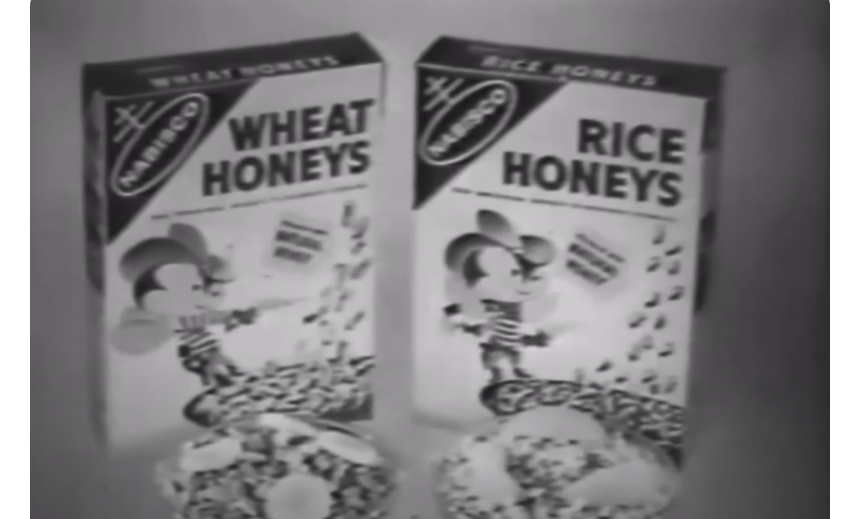
Originally created in 1939 by Philadelphia salesman Jim Rex, Ranger Joe Rice Honnies (along with its wheat counterpart) pioneered the pre-sweetened cereal category using an innovative honey-coating process.
After Nabisco acquired both cereals in 1954, it changed the names to Rice Honeys and Wheat Honeys and relaunched the breakfast foods in the market that same year. By the late 1960s, the brand experienced a significant drop in sales, prompting the company to change its name to Winnie-the-Pooh Great Honey Crunchers in 1971.
Even the famous bear couldn’t help save the cereal, and its sales continued to decline. Nabisco made one last-ditch effort by rebranding the cereal as Klondike Pete’s Crunchy Nuggets, which ultimately came to nothing, as the cereal had to be discontinued in 1975, marking the end of its 36-year presence in the market.
All Stars

In the 1960s, Kellogg’s introduced its All-Stars cereal, featuring “sugar-toasted oats” shaped like stars with a distinctive hole in the center. It was promoted by a whimsical magician mascot, The Wizard (or Wizard of Oatz), who promised “magic” in every bite to captivate kids.
However, after just a few years, it was repackaged as Frosted Sugar Stars in 1963 and later relaunched as Stars Cereal. Alongside the name change, the cereal pieces were also altered, and the characteristic hole in the center of the original cereal’s star shape was filled in. Despite these tweaks to boost appeal, the lineup couldn’t sustain momentum against flashier rivals and was fully discontinued by the mid-1960s.
Crispy Critters

Post Consumer Brands started rolling out Crispy Critters in 1963. Dubbed “the one and only cereal that came in the shape of animals,” this sweetened cereal, made of oats, consisted of animal-shaped pieces reminiscent of miniature animal crackers. However, Crispy Critters were discontinued by 1969, possibly towards the end of the decade, after a decline in sales.
The company attempted to relaunch the cereal in 1987 with a new puppet mascot named Crispy, but the campaign proved unsuccessful.
King Vitaman

Quaker Oats’ King Vitaman cereal was released in 1968. It not only contained high levels of vitamins and iron but also had a modest amount of sugar compared to other popular breakfast cereals at the time, such as Cap’n Crunch and Lucky Charms.
Featuring its whimsical crown-shaped pieces—like mini kingly thrones—and mascot, King Vitaman, the cereal’s non-animated advertisements included a jingle inviting kids to “Have Breakfast With the King,” which was a tempting proposition. The cereal was discontinued in 2019 to the shock of everyone who loyally consumed the product.
Frostyo’s
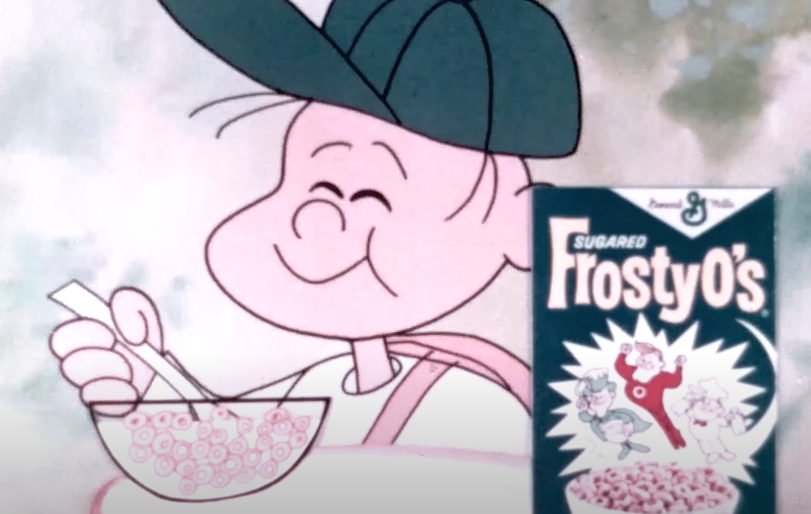
General Mills introduced Frostyo’s in 1959. Early boxes referred to these frosted donut-shaped oat cereals as “sugar-charged Cheerios”. However, as consumers became more conscious of their meals and their sugar content, Frostyo’s struggled to compete in the intense cereal market amid changing trends. It was eventually discontinued in 1979.
Juniors
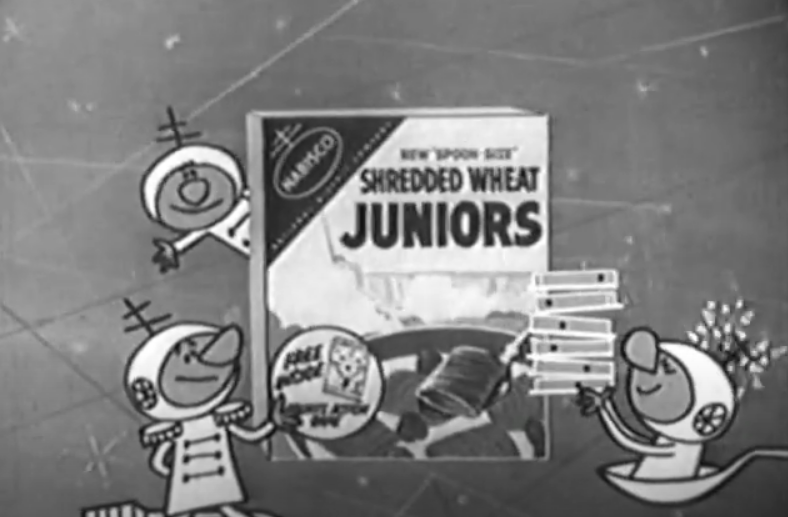
Juniors was one of Nabisco’s simplest shredded wheat cereals. Introduced in 1958, the cereal box featured three cartoon-drawn characters named Munchy, Crunchy, and Spoon-Size on its boxes. Despite efforts to appeal to younger consumers, Juniors was discontinued just a year later.
But the breakfast food seems to hold a nostalgic appeal for cereal lovers. It received 326 votes as one of the All-Time Greatest Cereals on MrBreakfast.com, a popular online resource dedicated entirely to breakfast.
Quake
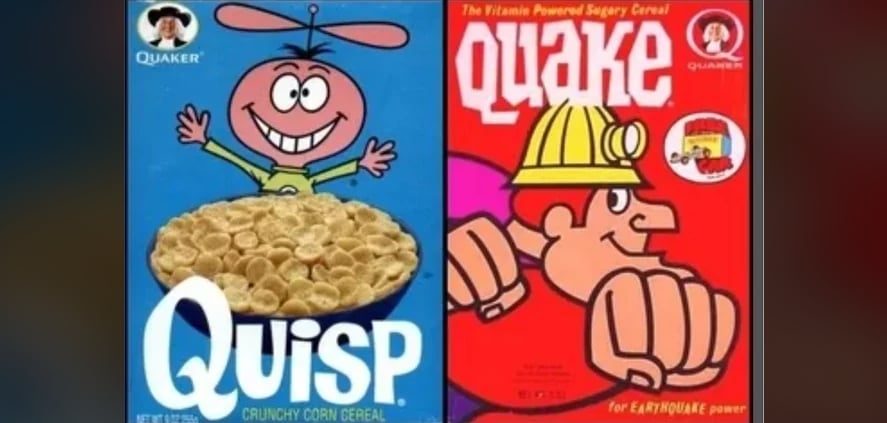
Launched in 1965 by Quaker Oats, Quake was the subterranean counterpart to the extraterrestrial Quisp. The cereal featured sugared corn and oat pieces, and its mascot was a burly, helmet-wearing miner.
Quake and Quisp clashed on television screens in a marketing campaign that ultimately asked consumers to vote for their favorite. In this legendary cereal showdown, the cosmic Quisp emerged victorious, and Quake was phased out in the early 1970s, forever cementing its place in breakfast aisle lore as the one that lost the war.
Concentrate
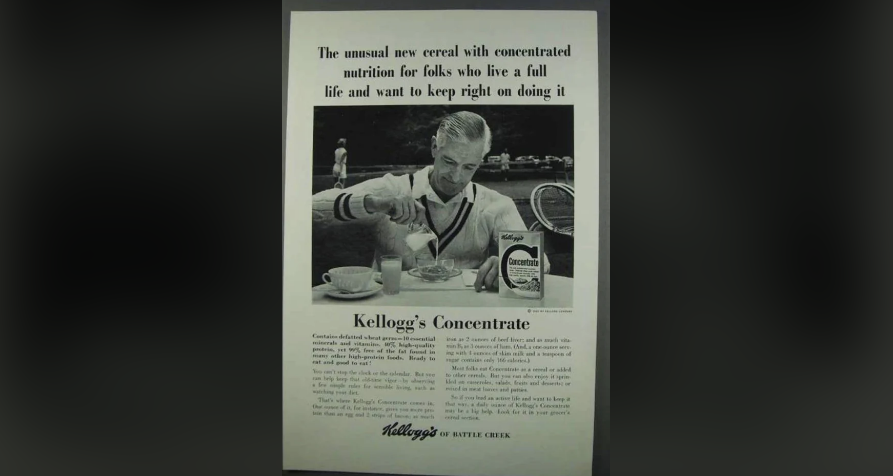
In a stark contrast to the sugary, kid-focused cereals of the era, Kellogg’s launched Concentrate in 1959 with a direct appeal to health-conscious adults. The cereal consisted of tiny, dense nuggets packed with vitamins and protein.
Its unique selling proposition was its nutritional density, with advertisements claiming that one spoonful offered more key nutrients than a bowl of other leading cereals. While it carved out a niche for a time, Concentrate was an artifact of a more earnest era and was eventually discontinued as the market continued to favor sweetness and whimsy over sheer nutritional power.
OKs
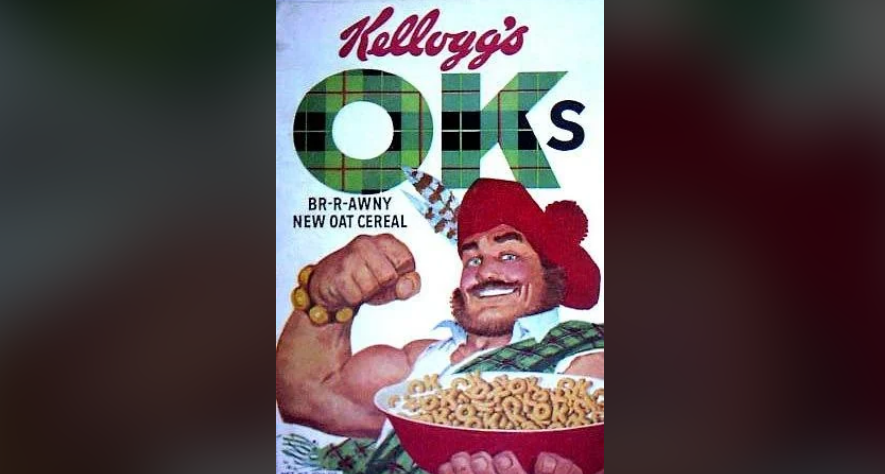
Kellogg’s rolled out OKs in 1959, banking on America’s love affair with the ubiquitous expression “OK!” The cereal featured distinctively shaped pieces—some resembling the letter “O” and others the letter “K”—that would spell out the affirmative response when floating together in milk.
The breakfast cereal’s marketing campaign centered around the enthusiastic Big Otis mascot, a rotund, kilt-wearing Scotsman who would dramatically declare everything about the cereal to be more than just acceptable.
With its oat-based blend (lightly sweetened for kid appeal) and moderate sugar coating, OKs positioned itself as the cereal that made mornings agreeable. However, the novelty of it apparently wore thin, and the cereal was discontinued by 1962, proving that sometimes even the most positive messaging can’t save a cereal from breakfast table rejection.

